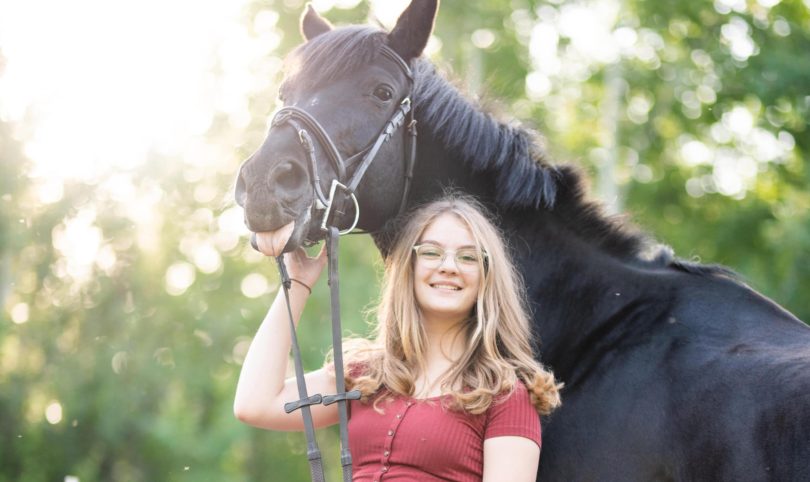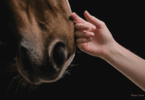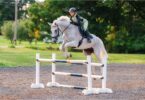What to Do Before Your Equine Photo Shoot
So you’ve booked a photo session with your horse — how fun! I’m sure you’re excited to capture the connection you share, the beauty of your horse, and this time in your lives.
But booking your session is only the first step — what do you need to do next?
As a professional horse photographer, I understand the significance of preserving those special moments with our four-legged friends. I also know that a successful and memorable photo shoot requires some preparation to ensure the best results.
Here I’ll guide you through the essential steps to take before your equine photo shoot, guaranteeing a truly remarkable experience for both you and your horse, including how to keep your grey horse clean and prevent your moody mare from throwing one of her tantrums in the middle of your session.
Set Your Horse Up for Success
1. Take the Edge Off
Preparing your horse is the most important step for any photo shoot. Animals do not understand what a photo shoot is and don’t know what in the world is going on.
Even if your horse is the king or queen of adorable ear-forward selfies, a professional photo session is a whole different experience. The best pictures are of calm, relaxed, and happy horses on their best behavior.
One of the easiest ways to calm your horse’s mind is by lunging him before the shoot.
I know what you might be thinking: my lazy gelding or push-button pony doesn’t need to be lunged! Under saddle, or hanging out in the barn, your horse may be the most relaxed creature on earth. He wouldn’t flinch if a firecracker went off right under his nose.
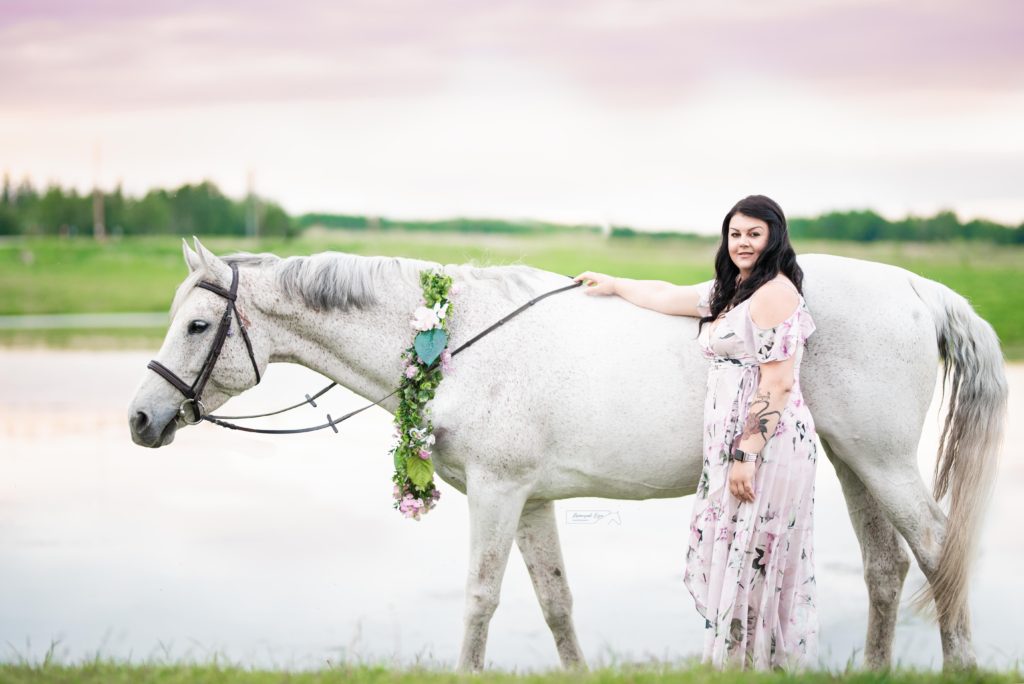
Photo Credit: Annakah Stadlweiser
But asking your horse to stand still, move this way or that, and put his ears up for an hour straight challenges even the most docile of equines. Lunging helps horses release some energy, maintain a sense of routine, and truly relax before we ask them to do something unusual.
Your lunging session doesn’t need to be intense, as we don’t want either of you working up a sweat.
A few circles of trot in each direction and one circle of canter in each direction is usually enough.
If you are worried that your horse might need more to get out their energy, feel free to lunge as long as needed, but remember that the goal is to help them relax…not become exhausted.
2. Avoid Scheduling Around Mealtimes
If your horse is anything like mine, meal times are sacred! We don’t want to mess with your horse’s schedule, so be sure to feed him ahead of time if your photo shoot is over breakfast or dinner.
We don’t want any grumpy geldings or mean mares stomping around with grumbling tummies.
Steer clear of high-energy feeds or supplements before your shoot, if possible, as rich foods can make it harder for your horse to stand still.
The ideal? Schedule your photo shoot between meal times. Your horse — and your photographer — will thank you!
Want to improve your own photography skills? Check out our Horse Photography Guide.
3. Monitor the Mood
Remember those cheesy mood rings that used to change color (in theory) with your mood at the moment? Pretend you have an equine version on your finger before, during, and after your session.
It’s critical that you stay aware of your horse’s mood.
Horses can have good and bad days just like humans. If your horse seems spooky, herd bound, or just plain grumpy when you are bringing him in from the field or while grooming, let your photographer know. That way, she can better accommodate and adjust to your uncooperative steed.

Photo Credit: Annakah Stadlweiser
The equine photographers I know, myself included, will only reschedule if absolutely necessary — if your horse is behaving dangerously. Minor behavioral challenges can be worked through with patience and creativity, and your photographer is there to make the process as easy and fun as possible.
4. Lather Up
Some of you might be lucky enough to have a horse who is kept in a stall, doesn’t rip off its blankets, or simply hates dirt. (Isn’t that the dream?) The majority of us, however, trudge out to the field and are faced with mud monsters who’ve gotten dirt in places that you didn’t even know dirt could go — and certainly doesn’t belong.
A thorough bath helps get all the dust, dandruff, and dirt out of the hair and allows your horse’s coat to really shine. A quality conditioner also does wonders for the coat and can save you a lot of brushing time.
Chief Rookie Aside // Here are a few essentials for getting your horse camera ready:
- Mane ‘n Tail Shower Set (includes shampoo, conditioner, and detangler)
- Mane ‘n Tail Ultimate Gloss Shampoo & Conditioner
- Cowboy Magic Detangler & Shine
- Cowboy Magic Shine In YELLOWOUT Whitening Shampoo
- Absorbine Hoof Polish (comes in black and clear)
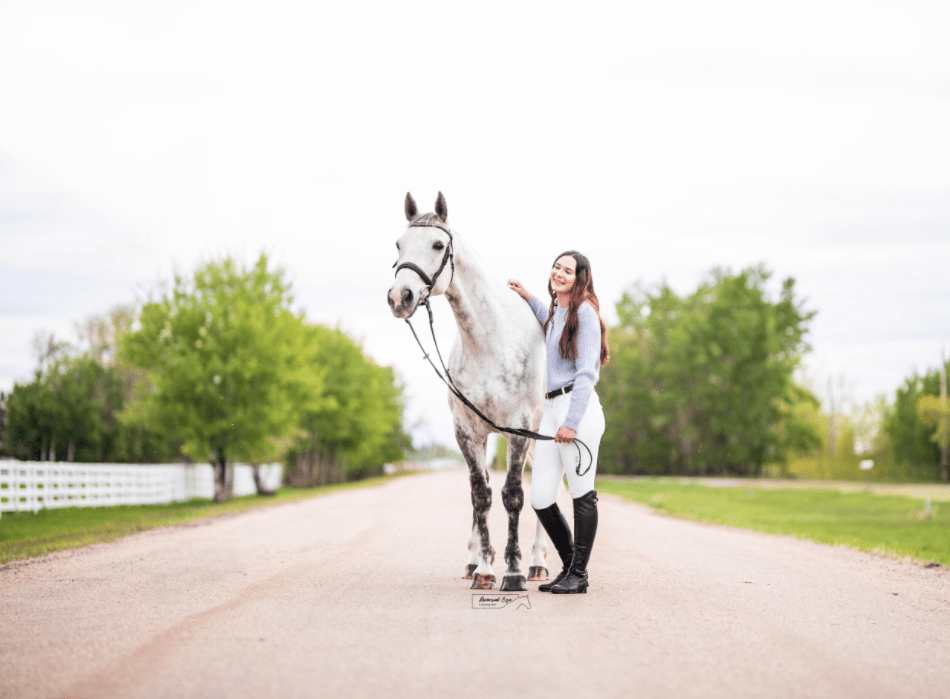
Photo Credit: Annakah Stadlwieser
I’m convinced that I own one of the dustiest horses in the world and one that also rubs his mane out in the same place. Every. Single. Year. If your horse is anything like mine, you’re probably dreading trying to get him clean — much less keep him clean until your photo shoot.
Bathe your horse a day or two before your session, then use a light sheet and neck slinky to help keep him clean.
You may also bathe your horse the same day as your photo shoot, just make sure you leave enough time for him to dry completely.
5. Bring Out the Show Sheen
Once your horse is bathed, I recommend grooming for at least an hour prior to your photo session — perhaps longer if you didn’t get a chance to bathe the day before.
Make sure you use clean brushes — dirty brushes won’t get your horse cleaner!
Follow your normal grooming routine but with extra care. Take longer for each step and make sure to get all the dirt out. Make sure to pay attention to the spots that often get forgotten — legs, chest, face, and butt.

Photo Credit: Annakah Stadlweiser
If possible, the tail and mane should be groomed and pulled to lie straight, but braiding is optional and up to you. After you’re finished grooming, use a finishing shine spray to really get your horse gleaming!
6. Pay Attention to the Details
Attention to detail is going to help your horse look his best. Clean around the eyes and nose with equine-friendly face wipes. Hose down hooves, clean off any dirt, and add a coat of polish.
For any white markings, I recommend using baby powder to make them pop.
Fetlocks can be trimmed (breed and preference dependent). As a final touch, wipe the entire coat down with a clean cloth to remove any last bits of dirt.
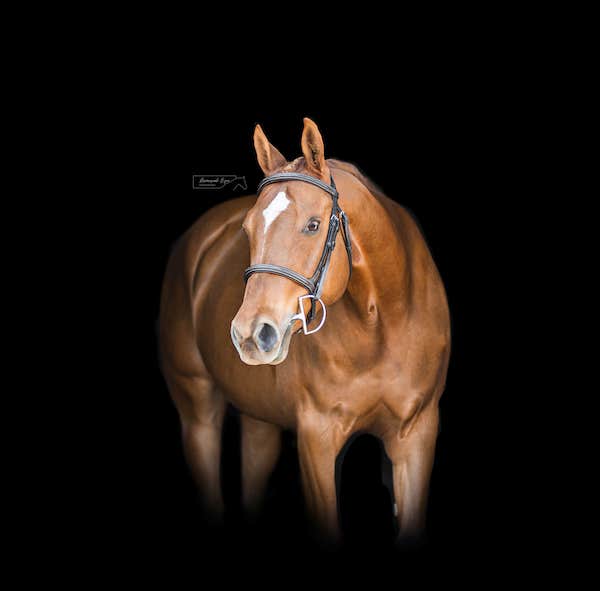
Photo Credit: Annakah Stadlweiser
If your session is in the Spring or Summer, apply fly spray to keep the bugs away. Part of keeping your horse relaxed is getting rid of pestering insects!
7. Stay Flexible and Patient
Horses will be horses, and there is nothing you or I can do about that. Be prepared for some funny blooper photos and times during the session where your horse simply will NOT put his ears forward — no matter what your photographer does.
Take a deep breath and roll with whatever happens.
If you’ve picked the right photographer, one who knows and loves horses, she will work with you to get the most out of your session — no matter your horse’s attitude.
We all know that equestrian sorts have more than their fair share of messiness and moody animals, and that’s okay.
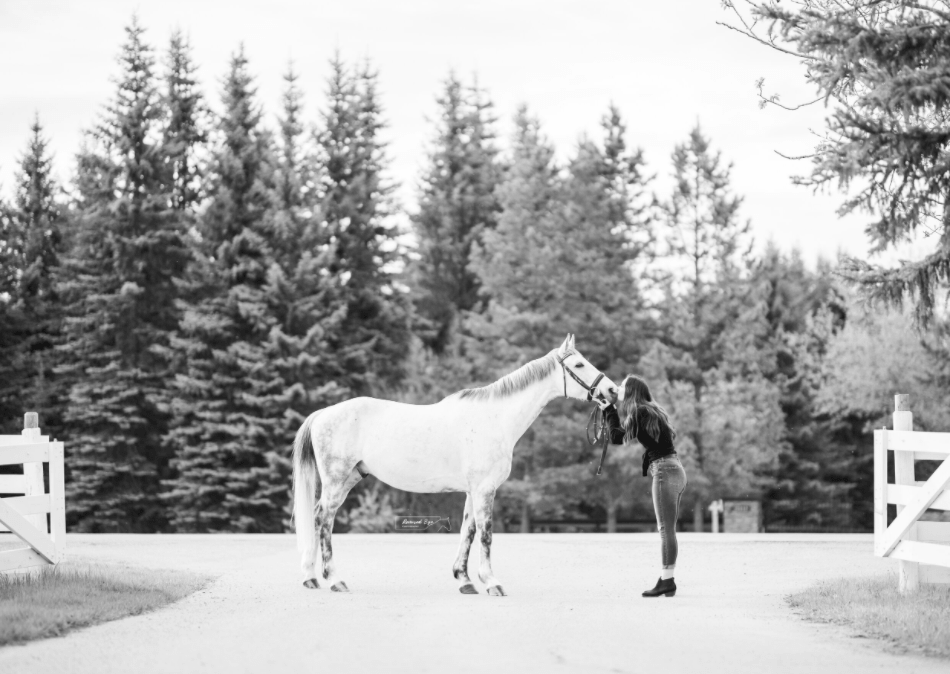
Photo Credit: Annakah Stadlwieser
Frequently Asked Questions
Q: How do you get a horse’s ear up in pictures?
Not all horses will respond to the same things, so get a range of items ready to try. A popular one is to fill something like a jug or plastic bag with treats (or rocks).
Choose an object your horse has never seen (new items will always catch a horse’s interest). You can use an empty water bottle for an interesting sound (remove the lid and crinkle it up).
Grab a bucket with a little bit of grain and start rattling, or slowly unwrap a peppermint. You can also offer your horse a handful of hay or grass.
Q: How do you take horse portraits?
Before you get started, introduce yourself (and your equipment) to the horse. Aim for a pretty quick shutter speed, as a horse’s ears can shift position in a fraction of a second.
If the picture is just of the horse, find an angle that will show all four legs and aim to get some shots with the horse’s ears facing forwards. Many owners like to include themselves in the shots, so try to wait for a sweet moment to happen.
Most importantly, be patient. It may take a while to get the horse relaxed and comfortable, but getting that perfect shot will be worth the wait.
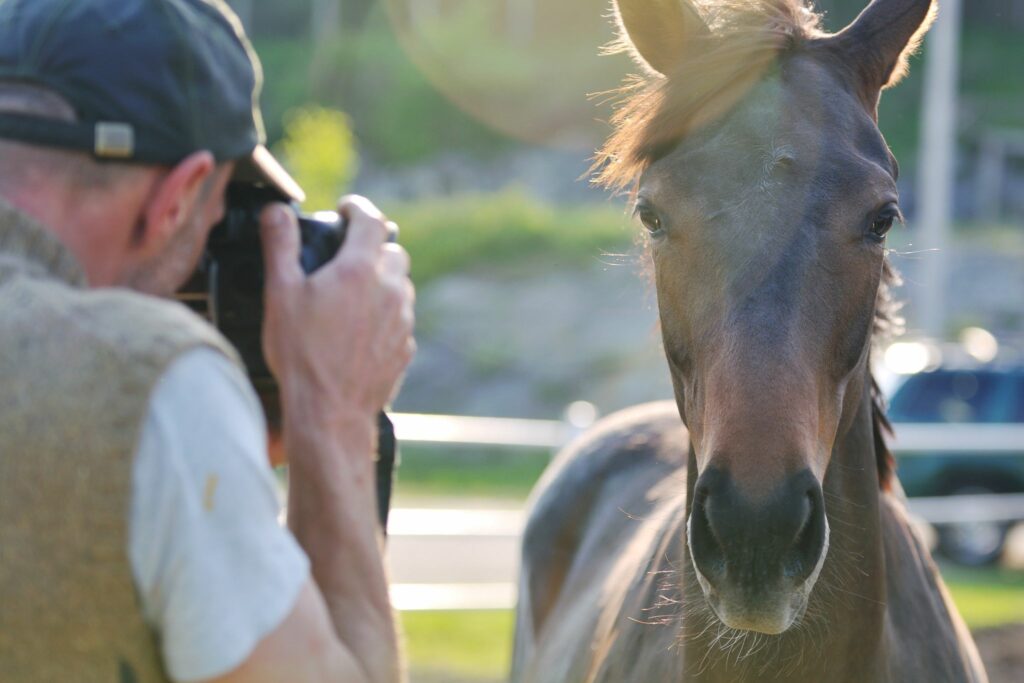
Source: Canva
Q: How do you take good pictures of horses on your phone?
Lighting is critical if you want to take a decent snapshot of your horse using a phone, so pick a sunny day for any planned photo shoots.
Once the sun’s shining and your horse is gleaming, it’s time to focus on focus. To get your camera to focus on your horse, tap the screen in the area he appears. This will tell your camera to focus on him, instead of the background.
Don’t get too caught up with the details, but do keep an eye on your horse’s extremities. There’s nothing more disheartening than finding that your horse’s feet or muzzle are missing from a breath-taking shot.
Q: What is the best angle to photograph a horse?
If you keep your camera aligned with the horse’s eye, it will help keep the body in proportion. Taking a head-on shot is ideal for a portrait, but a side-on shot is better for showing the whole horse.
If you’re photographing a horse in action, somewhere between head-on and sideways is ideal, so aim for a 45° angle.
Q: What lens is best for wild horse photography?
Horses are large animals so you don’t want too tight a focal range. The ideal lens for photographing wild horses is between 100mm to 400m, although you might want to take along a 500mm or 600mm lense if you’re planning on focusing on a single individual within a large herd.
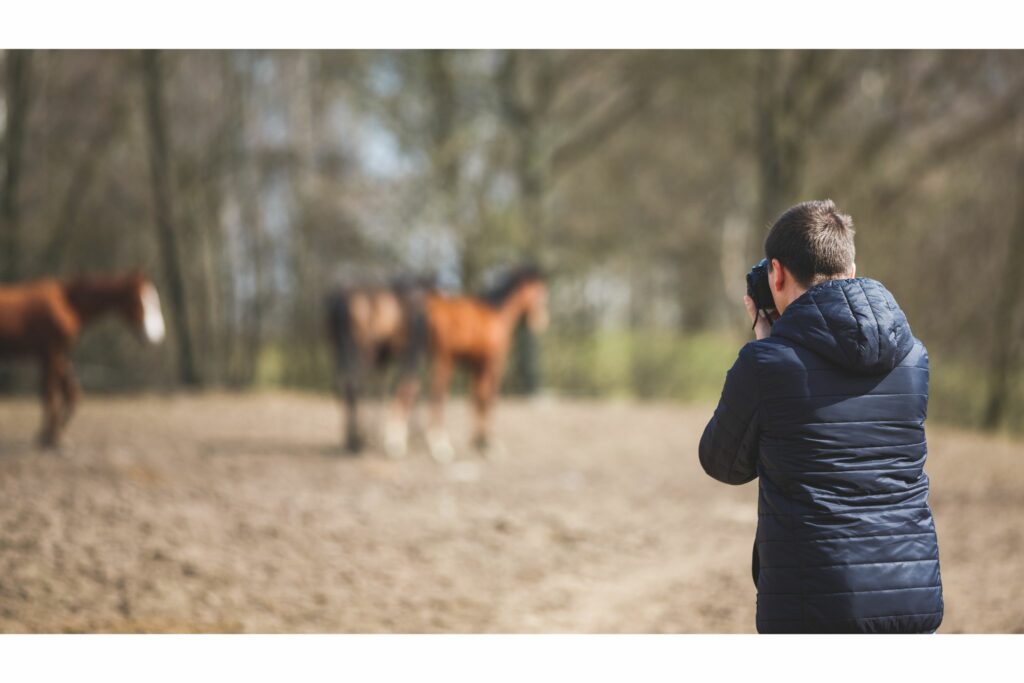
Source: Canva
Parting Thoughts
Follow the tips in this article, and do your best to get your horse clean and relaxed. But don’t stress if your horse is in a bad mood or if that stubborn poop stain is still kind of visible.
Instead, focus on how much you love your quirky equine partner and enjoy every sweet kiss on the nose. Magical moments are sure to follow!
P.S. Enjoy this article? Trot on over to:
- Best Horse Cameras (Action, Helmet, Trailer, Drone, Barn)
- 7 Simple Tips For Taking Better Photos of Horses in Action
- Horse Photography (Pro Tips, Editing, Settings)
- Fight the Fidget: Teach Your Horse to Stand Still
- 6 Best Horse Brush Brands for a Great Grooming Sesh
- 5 Soloshot Alternatives to Record Your Ride Inside & Out
- You’re Hired! How to Be a Star Working Student Equestrian
- 12 Gifts Barn Owners, Managers & Workers Will Actually Love

